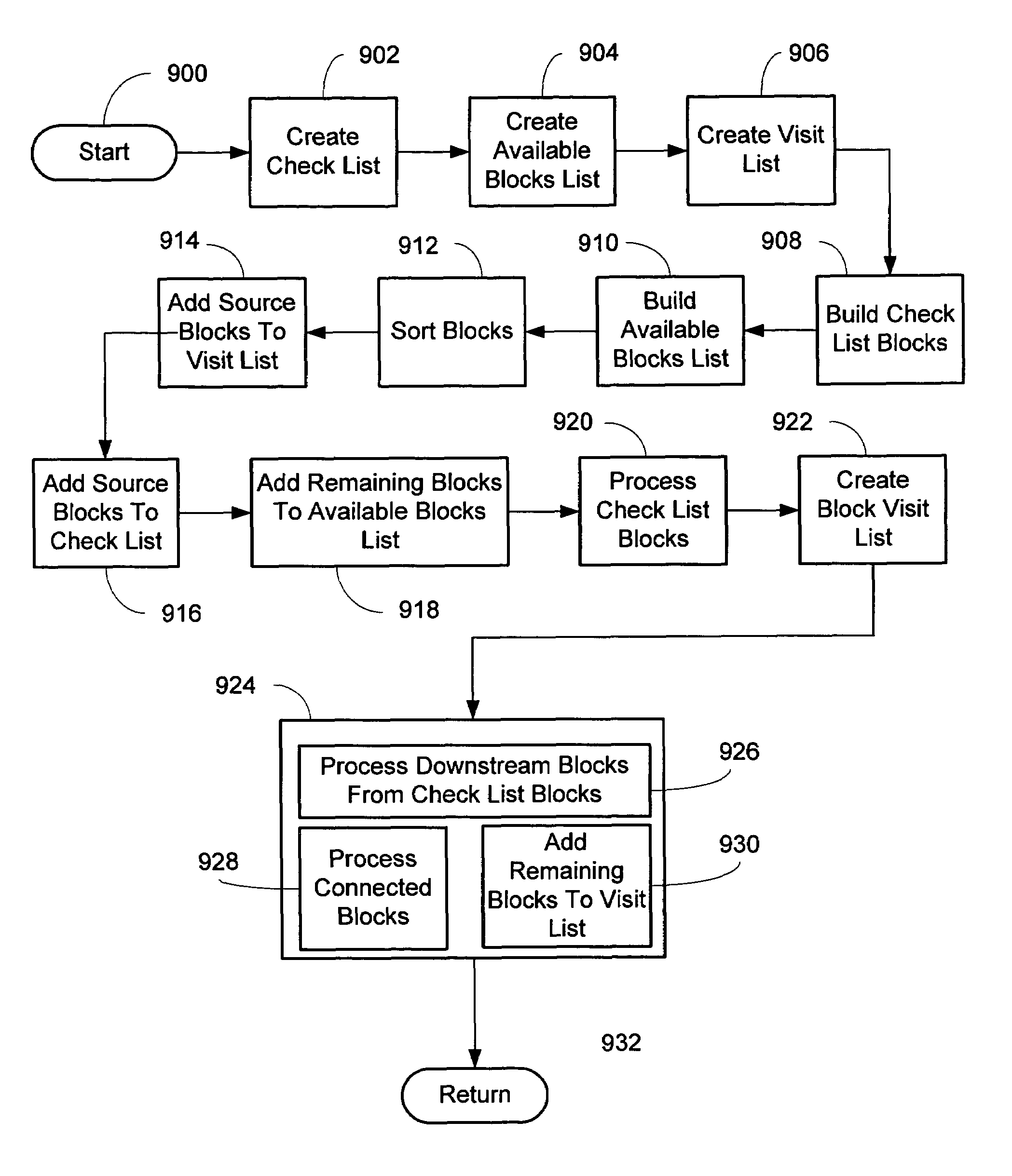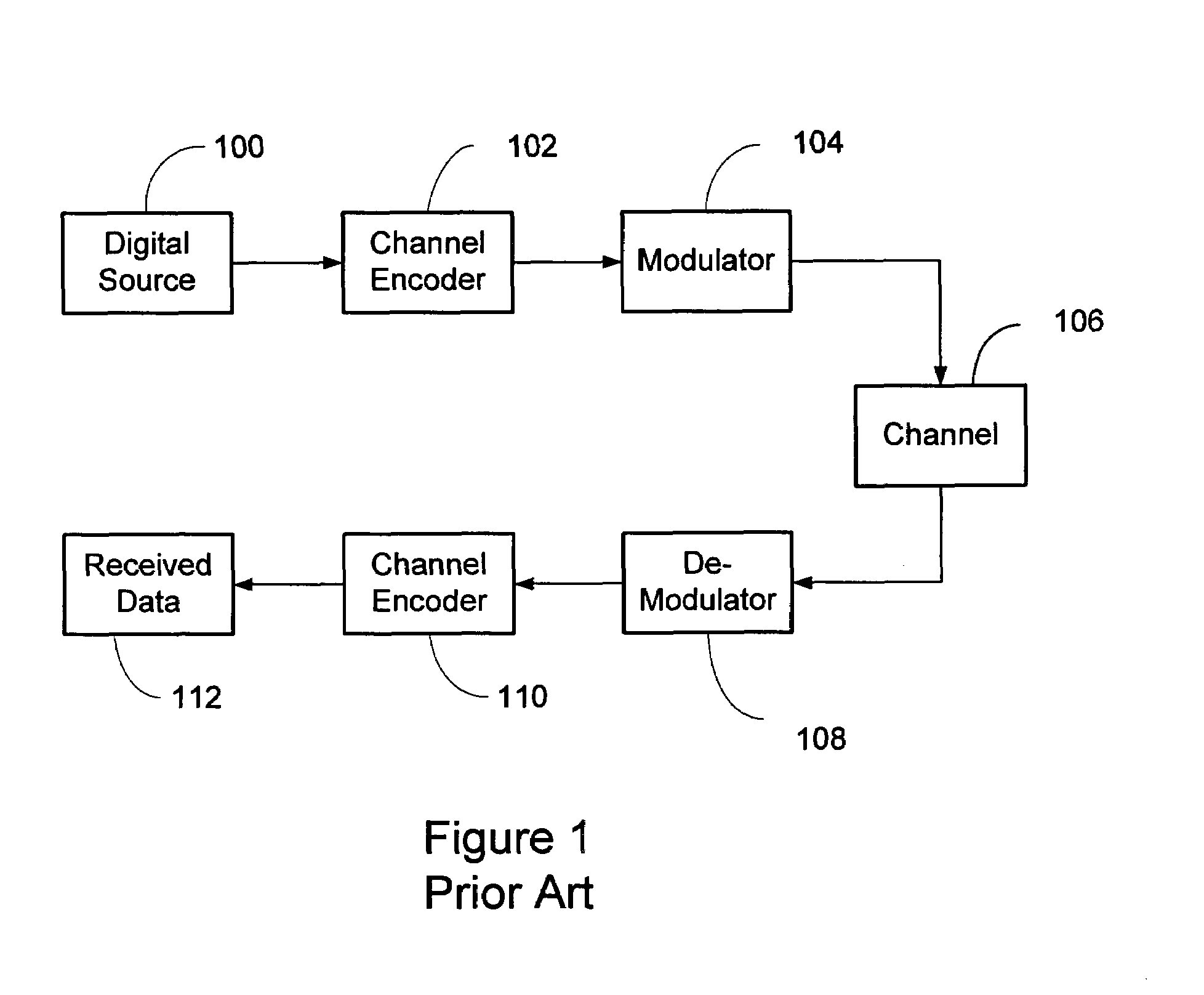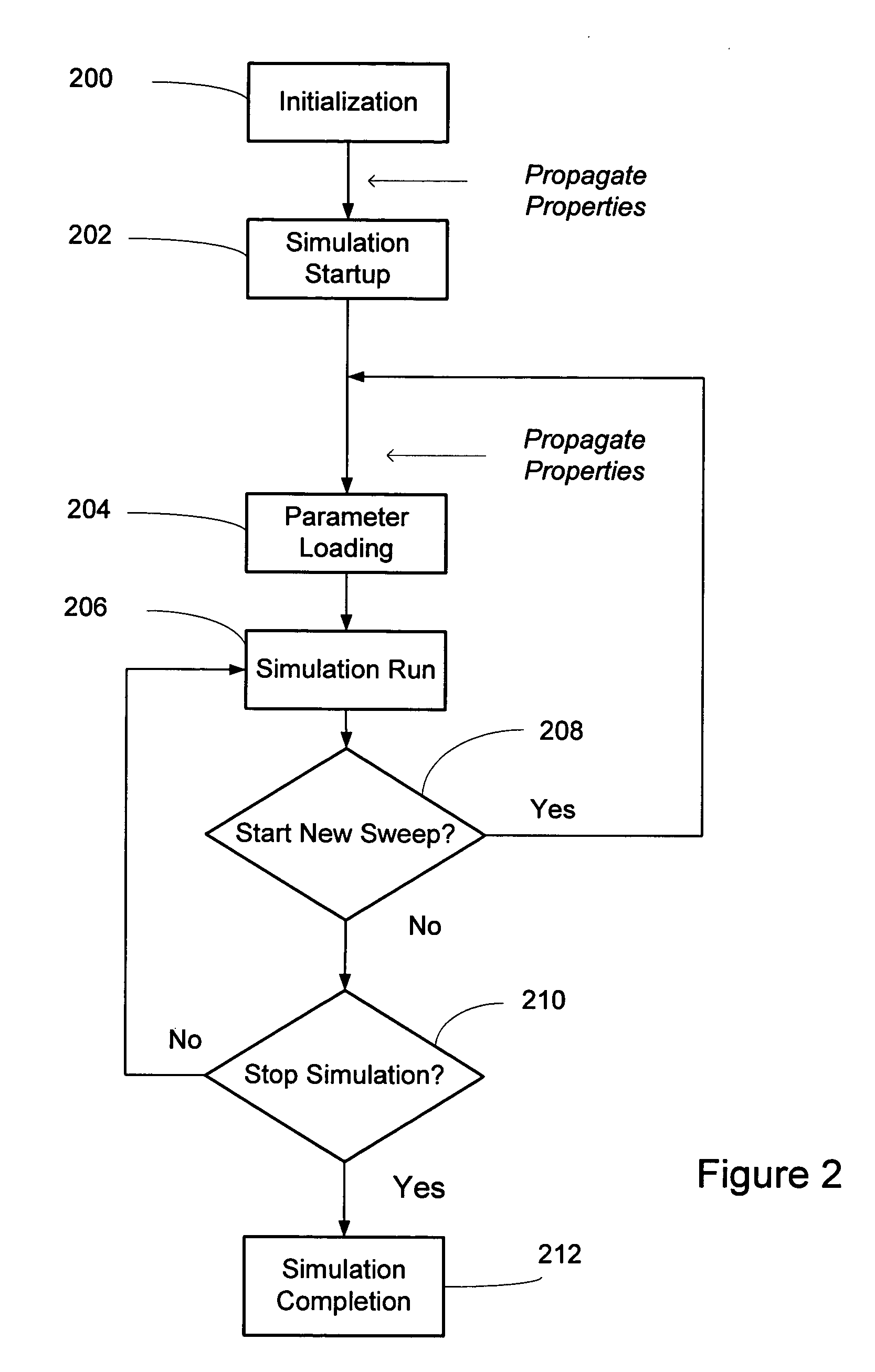Impedance mismatch modeling in a data flow or discrete time based system simulation
a data flow and discrete time based system technology, applied in the field of eda tools for integrated circuit design, can solve the problems of large number of additional connections, and difficulty in establishing system schematics or netlists
- Summary
- Abstract
- Description
- Claims
- Application Information
AI Technical Summary
Benefits of technology
Problems solved by technology
Method used
Image
Examples
Embodiment Construction
[0056]The invention provides for the propagation of the signal information as well as additional information, from one block to the next in a system. This propagation of information in addition to the signal information uses the connectivity of the blocks to propagate certain system or block properties from one block to the next block. A “property” is well known to one skilled in the art. It may be composed of an identifier and a value, where the identifier may be a string, or a numeric value, including pointers, used to uniquely identify the property. The value of the property is the information represented by the property and may come in many different formats, such as a numeric value, a vector of numeric values, text, or a data structure. A typical property may be represented as a name value pair (could be other representations), where the value may be any type of information describing or a characteristic associated with the block. Examples may include another name, a number, a ...
PUM
 Login to View More
Login to View More Abstract
Description
Claims
Application Information
 Login to View More
Login to View More - R&D
- Intellectual Property
- Life Sciences
- Materials
- Tech Scout
- Unparalleled Data Quality
- Higher Quality Content
- 60% Fewer Hallucinations
Browse by: Latest US Patents, China's latest patents, Technical Efficacy Thesaurus, Application Domain, Technology Topic, Popular Technical Reports.
© 2025 PatSnap. All rights reserved.Legal|Privacy policy|Modern Slavery Act Transparency Statement|Sitemap|About US| Contact US: help@patsnap.com



